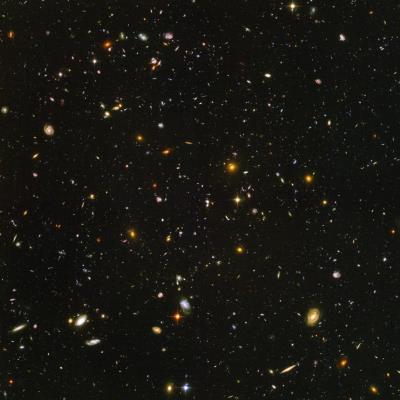
I've been watching Carl Sagan's "Cosmos" special lately, and I must say that while I thought there were lots of stars(suns) out there, I had no idea the magnitude of what I was about to learn.
We live on the outskirts of one of the Milky Way galaxy's spiral arms. The Milky Way galaxy alone has about 400 BILLION other suns. All could have planets, some might be like ours.
To blow my mind even further, with the update of the Hubble Space Telescope's latest camera, it has spotted THREE THOUSAND other VISIBLE galaxies. If each of those galaxies had about the same amount of suns,that equals out to be 1.2 QUADRILLION suns. That's just how many are VISIBLE to a camera. Estimates are that there are up to 500 billion other galaxies. How many suns is that? 200,000,000,000,000,000,000,000, or 200 sextillion SUNS.
Damn we're small.
http://imagine.gsfc.nasa.gov/docs/ask_astro/answers/021127a.html
http://www.universetoday.com/guide-to-space/galaxies/how-many-galaxies-in-the-universe/


